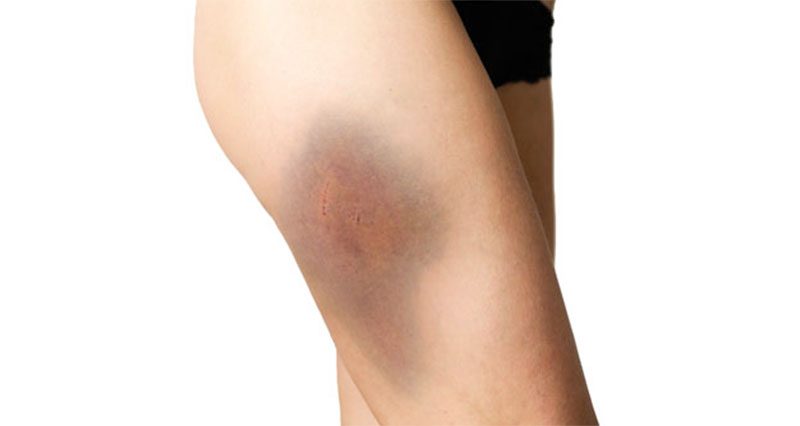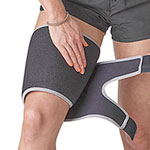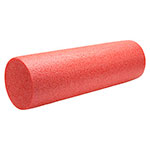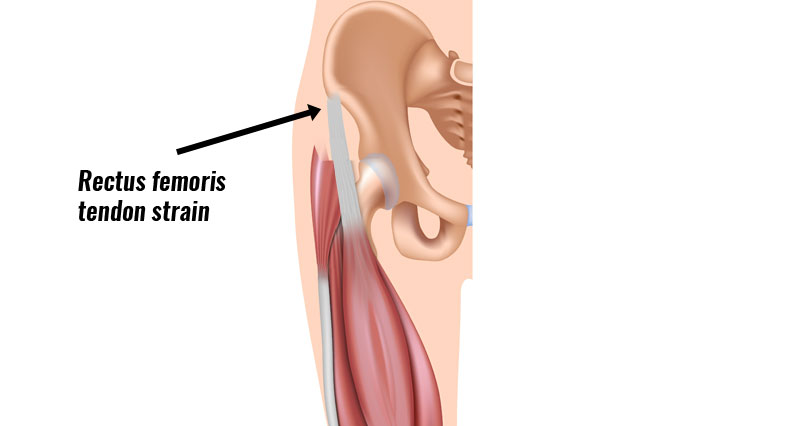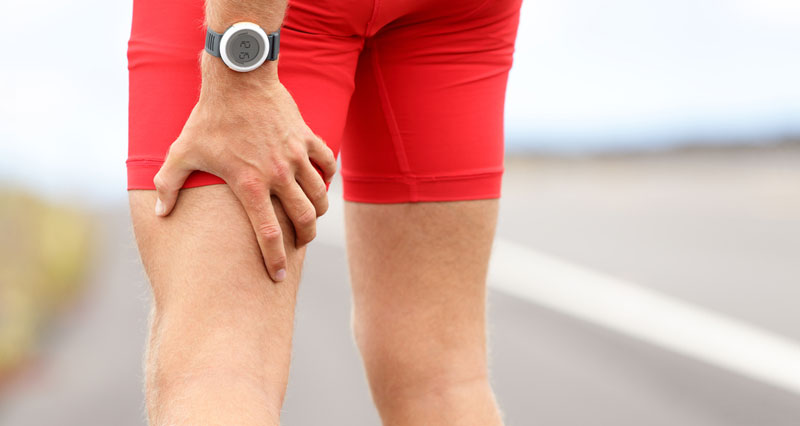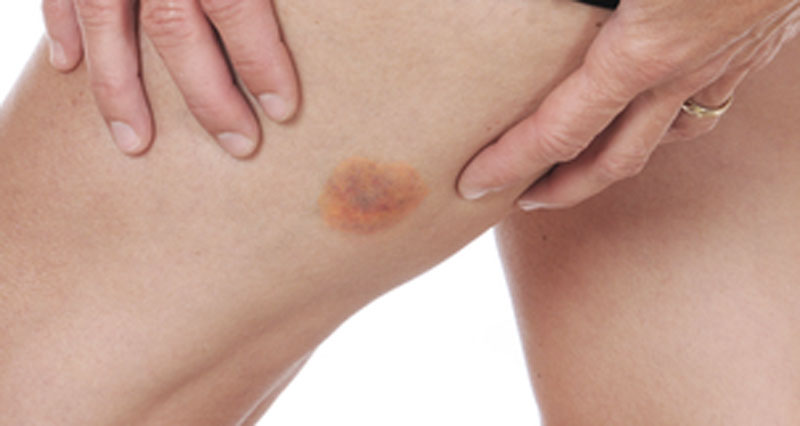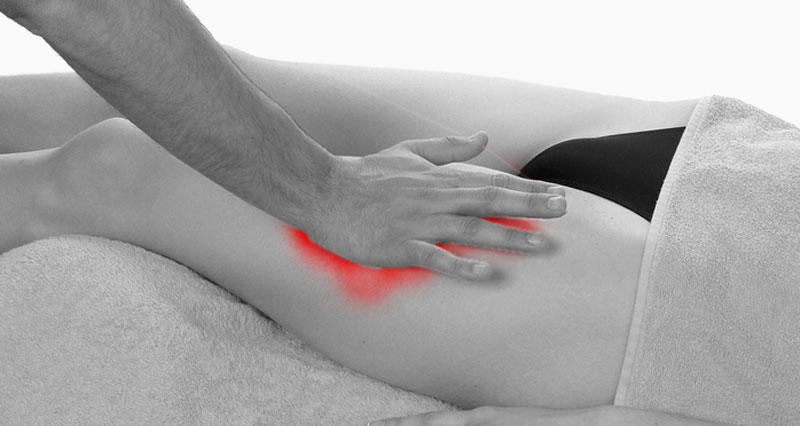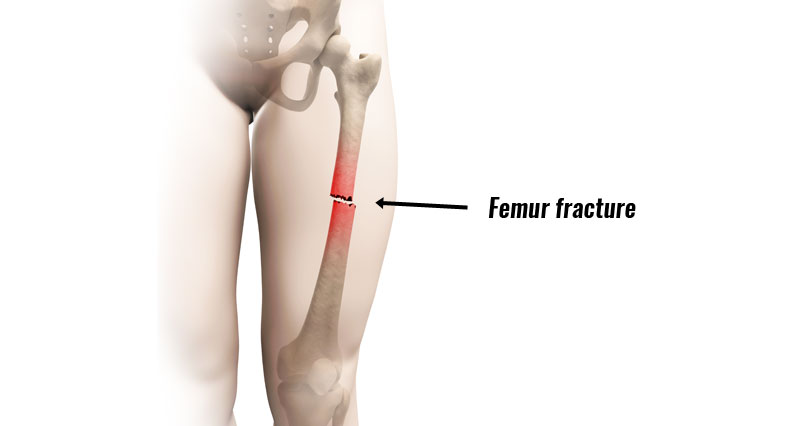A thigh contusion is also known as a dead leg or charley horse. It is caused by direct trauma or impact to the muscle, crushing it against the bone.
Medically reviewed by Dr Chaminda Goonetilleke, 14th Feb. 2022
A contusion is different from a thigh strain which is a tear of one of the quadriceps muscles.
Symptoms of a thigh contusion
Symptoms include:
- Pain at the time of injury
- Restricted movement and inability to run properly
- Walking may be difficult
- Rapid swelling
- Bruising may or may not appear
How bad is my thigh contusion?
Thigh contusions range in severity from very mild which is hardly noticeable at the time, to severe disabling injuries. As a result of which you will be unable to walk. Contusions are grade 1, 2, or 3 depending on how bad they are.
Grade 1 thigh contusions
If you have a grade 1 thigh contusion your thigh muscle will feel tight. You may walk with a limp. However, you are unlikely to have much swelling.
Trying to straighten your knee against resistance probably won’t produce much pain. You most likely will have nearly a full range of motion.
Grade 2
With a grade 2, you are unlikely to be able to walk properly. You will feel occasional sudden twinges of pain. You may have some swelling. Trying to straighten your knee against resistance will be painful. Pressing in (palpating) over the site of injury will also be painful.
Grade 3
A grade 3 contusion means you will be unable to walk without the aid of crutches. You will be in severe pain and significant swelling will appear immediately.
Contracting the muscle may produce a visible bulge or gap in your thigh. Expect to be out of competition for 3 to 12 weeks.
Although a dead leg or Charlie horse can often seem like a minor injury, it is important the correct diagnosis is made. If you fail to treat a thigh contusion properly it can lead to long-term injury or permanent muscle damage.
Causes & anatomy
A thigh contusion is caused by a direct impact or trauma to the muscle which crushes it against the bone underneath, causing internal bleeding in the muscle.
Skeletal muscles are made up of bundles of muscle fibres. The muscle is surrounded by a protective sheath (called the Epimysium).
Contusions are either intramuscular or intermuscular depending on whether the bleeding is contained within the muscle sheath, or whether the sheath is also damaged and the muscle bleeds outside the muscle sheath.
Intramuscular hematoma
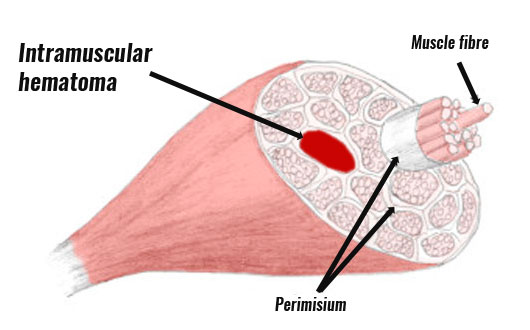
A thigh contusion causing an Intramuscular hematoma is bleeding that occurs within the muscle which is surrounded by a sheath.
As a result, the initial bleeding stops early, within hours because of increased pressure within the muscle. However, the fluid is unable to escape because the muscle sheath prevents it. Therefore, bruising is unlikely to develop.
The result is considerable loss of function and pain, which can take days or even weeks to recover.
Intermuscular hematoma
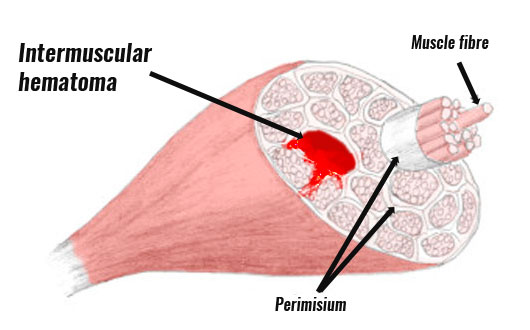
With an intermuscular hematoma both your muscle and part of the sheath surrounding it is damaged. This means that the initial bleeding will take longer to stop, especially if you do not ice it.
However, recovery is often faster than intramuscular. This is because the blood and fluids can flow away from the site of injury. You are more likely to see bruising come out with this one.
If after two to three days the swelling has not gone, then your injury is probably intramuscular. The bleeding is contained within the muscle.
If you see bruising, especially away from the site of the injury, then it is probably an intermuscular injury. You will have greater movement and muscle function if your injury is intermuscular.
Treatment for thigh contusions
Apply the PRICE principle (protection, rest, ice, compression & elevation) as soon as possible after injury.
Cold therapy
Apply a cold therapy and compression wrap immediately, or as soon as possible. Ice can be applied every two hours for 10 minutes for the first 72 hours for more severe contusions. This will help stop any internal bleeding and reduce pain and swelling.
Do not apply ice directly to the skin as it may cause ice burns. Instead, wrap in a wet tea towel. Or use a commercially available cold therapy wrap.
It is very important to apply cold and compression to a contusion. Applying heat or deep massage in the acute stage may cause further injury or lead to myositis ossificans which is a bony growth within the muscle.
Rest
Complete rest is important for at least the first 24 to 48 hours. This may be longer if you have a grade 2 or 3 injury.
Thigh supports
Wear a compression bandage or thigh support to protect the injury and help reduce swelling. A simple tube grip type support is fine during the acute stage.
Later, a neoprene heat retainer helps support the muscle, encouraging blood flow and healing.
Elevation
Elevate the limb to help swelling and tissue fluids to drain away from the area.
Heat
From day four (no earlier – and it may be longer in severe injuries) apply heat. Use a hot water bottle, heat pack, or hot bath.
Your physio may use ultrasound to speed up recovery.
Massage
Massage ONLY once the acute phase has definitely passed. Heat treatment and massage can cause serious muscle damage if performed on an acute
Stretching exercises for thigh contusions
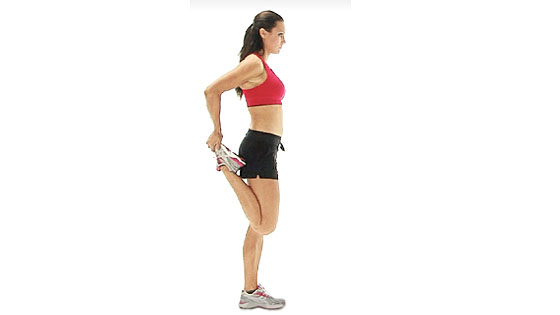
If it is not painful then begin gentle stretching exercises, but only after the acute phase. This is usually 48 hours post-injury but may be longer.
Strengthening exercises for thigh contusions
With a grade one contusion, you can perform strengthening exercises as soon as you can do them pain-free.
Start with the easier exercises on a daily, or twice daily basis. Then, as soon as you feel comfortable, move on to the more difficult exercises. However, you may need more recovery time after. So 2 to 3 times per week is OK.
With a grade two thigh contusion, it may be a week before you can begin strengthening. Grade three injuries will take even longer.
All strengthening sessions should start with a gentle warm-up and stretch and finish with a good stretch. Continue exercises for a few weeks after you feel the injury has healed.
If you are unable to continue normal training, then swim or cycle instead. or if this is not possible work on the upper body strength. It is important to continue a training routine of some description.
Returning to full fitness
This is a gradual process. For a grade one contusion normal training may be resumed within a few days. It is important to maintain a stretching and strengthening program alongside training to ensure full strengthening and mobility of the muscle.
Gentle jogging may be started and built up until the athlete can run comfortably for 40 minutes. Speedwork should be introduced gradually, for example, 10 x 60m at 50% of top speed, the next session might be 10 x 60m at 70% top speed, and so on.
Read more on thigh injury rehabilitation exercises.
